Listen to the Podcast
6 Oct 2023 - Podcast #852 - (17:30)
It's Like NPR on the Web
If you find the information TechByter Worldwide provides useful or interesting, please consider a contribution.

If you find the information TechByter Worldwide provides useful or interesting, please consider a contribution.
This is a good week for short stories. Individually these are all too brief to be even an item in Short Circuits, but maybe they can be combined to make a decent main article. Let’s see.
Occasionally I mention Microsoft’s PowerToys, which has more than 20 major functions (some of which have additional capabilities). These can be enabled or disabled individually and many have substantial configuration options. You can download PowerToys from GitHub or from Microsoft’s website.
Windows offers lots of ways to start applications. You might have pinned your most-used applications to the Task Bar. There’s the Start Menu, of course, or you can press the Windows Key and type the first few letters of the app’s name. PowerToys Run is probably the fastest way to start an application that’s not on the Task Bar.
Click any small image for a full-size view. To dismiss the larger image, press ESC or tap outside the image.
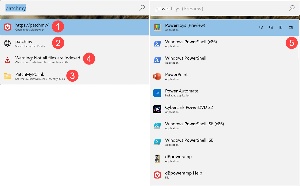 The default activation is Alt-Space, which is easy because Alt is adjacent to the spacebar. PatchMyPC is scheduled to run daily at 11 in the morning, so I don’t keep it on the Task Bar; but I do occasionally need to check its settings. Typing Alt-Space patchmy offers (1) a URL with the text, (2) to open Vivaldi and search for the text, and (3) the shortcut link to start the app. There’s also a warning that (4) not all files are indexed. This is intentional because I don’t want Windows to waste time indexing the entire computer.
The default activation is Alt-Space, which is easy because Alt is adjacent to the spacebar. PatchMyPC is scheduled to run daily at 11 in the morning, so I don’t keep it on the Task Bar; but I do occasionally need to check its settings. Typing Alt-Space patchmy offers (1) a URL with the text, (2) to open Vivaldi and search for the text, and (3) the shortcut link to start the app. There’s also a warning that (4) not all files are indexed. This is intentional because I don’t want Windows to waste time indexing the entire computer.
PowerToys Run searches for any file name that contains the text you’ve typed. Typing power, for example, offers PowerToys, PowerShell, PowerPoint, Power Automate, CyberLink PowerDVD, and more. The (5) first ten possibilities are shown, and you can adjust this number; after that, you can scroll to see other possibilities. For me that includes the PowerToys directory, some images with “power” in their names, and some icon files.
You can choose to have PowerToys Run pop up where the mouse cursor is, on the primary monitor, or on the monitor that currently has focus. If you haven’t given PowerToys Run a try yet, check it out.
The TechByter website has been hosted by Bluehost for longer than I can remember, all the way back to when it was owned by Mike Heaton in Orem, Utah. It was acquired by Endurance in 2015 and is now owned by Newfold Digital. It’s unclear how many sites are at Bluehost, but more than a decade ago, the count was in excess of two million.
Most phone and chat support now seems to be located in India. That’s neither good nor bad and Bluehost’s India-based tech support seems to be average or slightly above average.
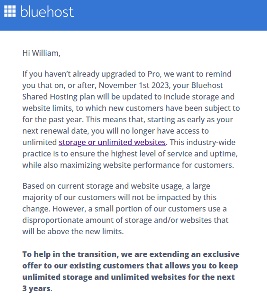 I’ve had an “unlimited” plan for many years, meaning a single account can have multiple domains and there is no set limit on disk usage or data transfer. The new plan, effective next month, will have substantial limits: No more than two domain names (I have three that are active) and no more than 20GB of data storage (TechByter’s podcasts alone consume 10GB and the remaining files in the public_html directory push the total size above 17GB).
I’ve had an “unlimited” plan for many years, meaning a single account can have multiple domains and there is no set limit on disk usage or data transfer. The new plan, effective next month, will have substantial limits: No more than two domain names (I have three that are active) and no more than 20GB of data storage (TechByter’s podcasts alone consume 10GB and the remaining files in the public_html directory push the total size above 17GB).
I’m OK with that, but Bluehost’s marketing letter about the change simply said there would be limits, not what the limits would be. To obtain that information, after searching the Bluehost site unsuccessfully, I contacted support. Even the support person needed nearly 10 minutes to find a partial answer.
What’s not OK, in my estimation, is that Bluehost should simply raise prices if they want to raise prices, not tell me that I’ll have to pay another $7 per month three years in advance if I want to keep the “unlimited” plan. Certainly they could examine the account, see that I have more domains than would be permitted and that I’m pushing the file size limit. The email could have provided that information so that I wouldn’t have had to waste time locating the information needed to make an informed decision.
CEOs seem perplexed by why consumers have little trust in their companies.
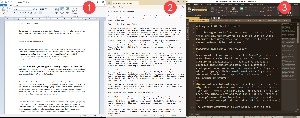 Have you ever used WordPad, Microsoft’s nearly weightless word processor? Do you know anyone who has? Minimal formatting is possible in (1) WordPad, but not in (2) Notepad, or a more fully functioned (3) UltraEdit Studio. It was about midway between a plain text processor and a word processor. Now it’s going away.
Have you ever used WordPad, Microsoft’s nearly weightless word processor? Do you know anyone who has? Minimal formatting is possible in (1) WordPad, but not in (2) Notepad, or a more fully functioned (3) UltraEdit Studio. It was about midway between a plain text processor and a word processor. Now it’s going away.
NotePad, however, will gain some new features. This is a program that hasn’t been updated in many years—prior to Windows 8. It’s likely that WordPad will still be present in this year’s fall update, but Windows 12 is coming. (Yeah, I know, Microsoft said Windows 10 would be the final version of Windows. Don’t get me started.)
The fall update should introduce NotePad’s new functions, though. As with many new applications, NotePad will automatically save files. They’ll be saved to Microsoft’s OneDrive unless you specify otherwise.
Those who are enrolled in the Windows Insider Canary channel can already see the autosave function in action. A word of caution, though, do not enroll any mission-critical computer in the Canary channel. Getting out of the Canary channel is quite difficult.
In 1983, not everybody had a computer at home. At work, I had a remarkable word processor called Word-11 that ran on a Digital Equipment Corporation 11/73 computer that was in a distant corner of the building. A dumb terminal on my desk brought the magic to me.
I wasn’t aware of it, but Seymour Rubenstein had been working on a word processor called WordStar. It ran on the standard CP/M computers of the day, but also on the newfangled DOS computers. Because computers differed so much, WordStar didn’t depend on function keys. Saving a file was accomplished by pressing Ctrl-K, S. That made sense for dealing with a variety of operating systems.
But soon DOS and DR-DOS became the standards. Microsoft’s DOS vanquished the other operating systems, and that was a disadvantage for WordStar.
WordStar was still the champion in 1983, though, even though I considered it to be trash compared to Word-11 on a DEC minicomputer. I had recommeded to the owner of the company I was working for that we should look at DOS-based personal computers. It was my suggestion, so I became the PC guy at a company that had little interest in PCs.
Then a guy from Utah showed up at the front office. The receptionist decided that I should see him and he showed me WordPerfect 2.2. This was a program that was far better than Word-11 and orders of magnitude better than WordStar.
WordStar persisted for a few years, but WordPerfect was the market leader until the 1990s when Microsoft, by being devious and by being large, took over the word processor desktop market.
If you want a no-frills word processor today, you might install WordPerfect 5.1, but that would require installing a virtual machine application such as VirtualBox, adding an older operating system like Windows 95, and then setting up the old version of WordPerfect. Version 5.1 is considered by many (including me) to be the best word processor of the DOS era.
Click any small image for a full-size view. To dismiss the larger image, press ESC or tap outside the image.
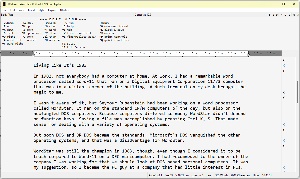 Or you could install WordTsar. Note the clever spelling. WordStar is the antique application. WordTsar uses the same letters as WordStar, sounds almost the same, and adds the additional humor of changing STAR to TSAR (meaning “king” in Russian). WordTsar is open-source project that has support for Windows, Linux, and MacOS. It mimics the functionality of a 1980s word processor, but it offers some support for DOCX and RTF documents along with Wordstar 4 and Wordstar 7 files.
Or you could install WordTsar. Note the clever spelling. WordStar is the antique application. WordTsar uses the same letters as WordStar, sounds almost the same, and adds the additional humor of changing STAR to TSAR (meaning “king” in Russian). WordTsar is open-source project that has support for Windows, Linux, and MacOS. It mimics the functionality of a 1980s word processor, but it offers some support for DOCX and RTF documents along with Wordstar 4 and Wordstar 7 files.
But why? If you want basic no-frills text editing, why not use UltraEdit, UltraEdit Studio, NotePad++, or any other basic word processor or even a more advanced word processor?
I can’t answer that question, but I started writing this article in WordTsar, but eventually moved to UltraEdit Studio because WordTsar doesn’t support copy/paste operations and I use this function a lot.
Writer Gerald Brandt, who has been using WordTsar to write science fiction novels, is the main driver behind the program.
I’m happy working with UltraEdit Studio initially because it’s a text-only application that allows me to concentrate on the ideas and words. Then I move the text to Microsoft Word for basic formatting and then the Dreamweaver (for websites) or InDesign (for publications). I can’t think of a good reason to work with WordPerfect 5.1 or with WordStar/WordTsar.
You can download the latest version from SourceForge, but why? The old days weren’t better than today. Basic functions such as copy and paste are missing, but are promised for future releases. There’s something to be said for the basics and WordStar’s ability to work on many CP/M and DOS computers was remarkable. But it’s no longer 1983, or even 1993. I’ve though about setting up a virtual machine and installing WordPerfect 5.1, the most competent word processor from those days, but why? I can use Microsoft Word, LibreOffice Writer, UltraEdit Studio, or even Notepad++ to prepare documents for use in 2023.
Sometimes it’s best just to let go of history.
Most websites have a page that contains terms of service and there may be a privacy policy page. Few people read them, in part because they are frequently couched in legalese and written with the intent to obscure more than they reveal.
TechByter Worldwide doesn’t have a terms of service page, but there is a privacy policy page. The page was last updated nearly nine years ago and it’s written in English that’s as clear and plain as I could make it.
Wouldn’t it be nice if you could obtain a summary that’s easy to read from commercial sites? You can!
A project called Terms of Service; Didn’t Read is attempting to make sense of privacy notices and terms of service on internet websites. A relatively small number of sites have been rated so far and volunteers provide input that is then verified by staff members. Each rated site receives a letter grade (A through E) with some points highlighted.
Click any small image for a full-size view. To dismiss the larger image, press ESC or tap outside the image.
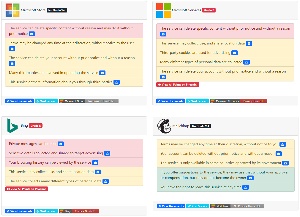 The Microsoft Store hasn’t been graded yet, but both Bing and Microsoft services are rated E. Bing, for example, can read users’ private messages, collects sensitive data that is shared with advertisers, the service can view your browsing history, and it shares your location data with advertisers.
The Microsoft Store hasn’t been graded yet, but both Bing and Microsoft services are rated E. Bing, for example, can read users’ private messages, collects sensitive data that is shared with advertisers, the service can view your browsing history, and it shares your location data with advertisers.
Terms of Service; Didn’t Read uses the shortened name ToS;DR, which is inspired by the well known acronym TL;DR that means “Too Long; Didn’t Read”. The site’s About page says the idea behind ToS;DR emerged during the 2011 Chaos Communication Camp near Berlin with people from Unhosted, a movement to create web applications that give users more control over their data and privacy. The operation is funded by non-profit organizations and individual donations.
Even the Electronic Frontier Foundation receives only a B rating and fewer than 10 sites earn an A—not even their own site, which receives a B. Other B-rated sites include Wikipedia, GitHub, Firefox Cloud Services, ProtonVPN, Vivaldi, and a few dozen others. Many sites haven’t yet received letter ratings, but there are positive and negative observations about their policies.
ToS;DR isn’t a complete one-stop shop, but it’s a good start.
An unanticipated hiatus began on 6 October 2022 when I had unplanned spinal surgery. The final program of 2022 ran on 30 September and TechByter Worldwide didn’t resume until 6 January 2023 with three programs that had been prepared for 2022 but didn’t run because I was in hospitals, inpatient physical therapy, and assisted living until mid December. It has been a most interesting year.
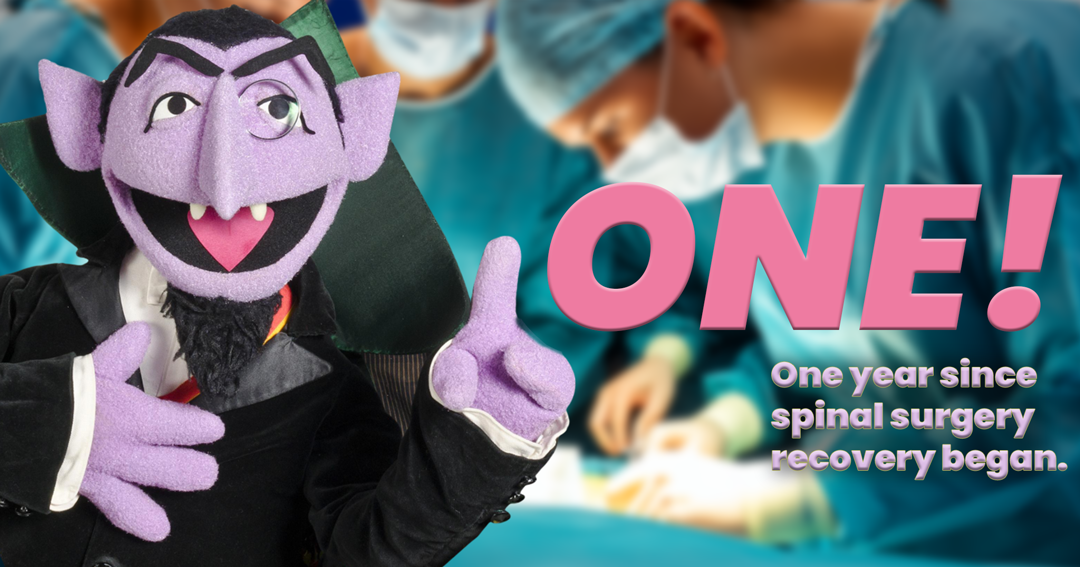
The optical disc era was brief. In 2003, the ability to burn a CD or a DVD was a big thing. Disc burners were expensive and so were discs. You can buy Verbatim DVD blanks for 36¢ each these days. Compare than to $2.50 or more in 2003. In today’s dollars that would be more than $4 each. But back then I was excited about it:
How many people copied old 8mm movies to VHS tape only to find that VHS tapes have a life span that’s more limited than 8mm film? More than you want to know about, probably. Now people are converting VHS, beta, and other video tape formats (along with their old 8mm or 16mm movies) to CD and DVD. For digital cameras, the only storage medium is disc. Are you buying discs that will last?
All CDs are not made the same. I remember when floppy disks were used to transfer files and store backup. Some people bought floppies that cost $1 each (or more) and others bought the ones that came bulk, 100 for about $10. In general, the more expensive disks failed a lot less, but even the cheap ones usually came with a "replacement guarantee". The guarantee replaced the disk, though, not the information on it. If the information on the disk happened to be the final copy of your master’s thesis or a backup file of your company’s customer database, you didn’t get it back.
Smart people concluded that paying a little more for a disk that would store critical data was a good idea.
Fast-forward to 2003: We see the same thing with CDs and DVDs, but the price difference between "name brand" and "no-name" CDs is a lot less. When you can buy 100 Verbatim DVD+R discs for $265, 100 Verbatim DVD-R discs for $285, or 100 Verbatim CDs for $50, is there logic in paying $175 to $200 for generic DVDs or $30 for 100 generic CDs?
My answer: It depends. If you’re using the CD or DVD to send someone data that can easily be replaced and has no time value, go with the cheap stuff. The cheap ones will fail more often, but as long as you can replace the disc and the person you’re sending it to can afford to wait until you replace the disc, there’s no problem. On the other hand, if you’re creating archival copies of photos for your children, don’t go cheap. A well made and properly stored CD or DVD can be expected to last 50 to 100 years—long enough that the technology will be replaced by something better.